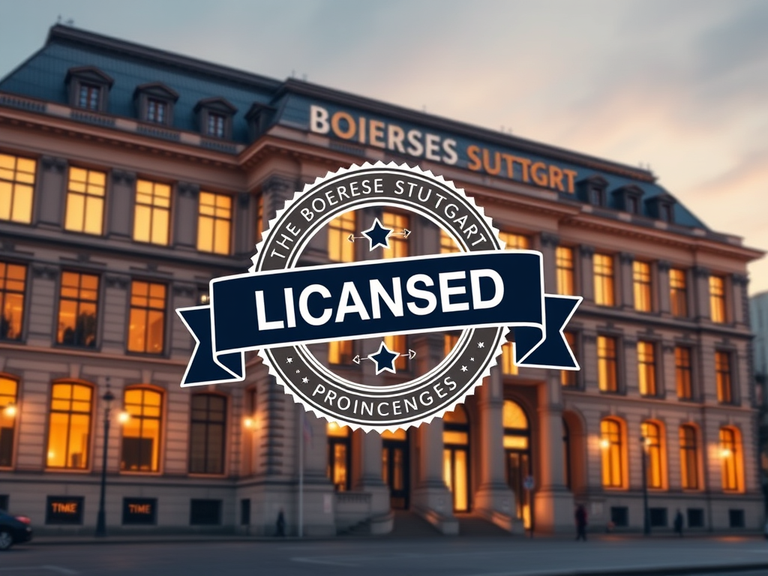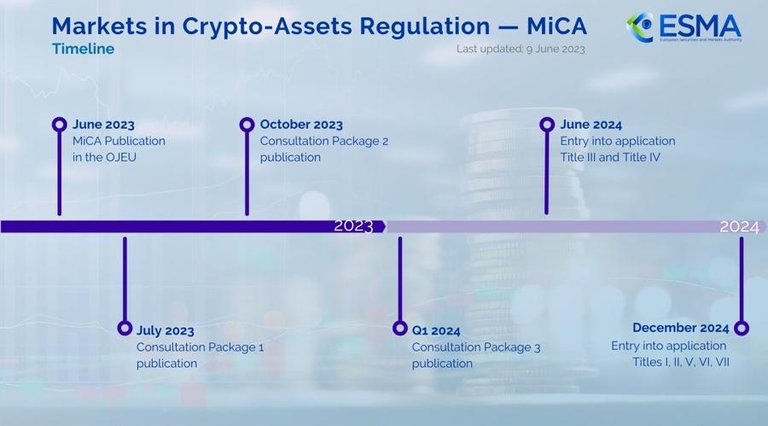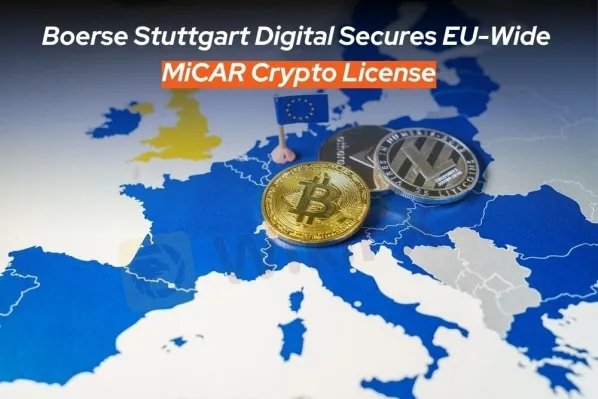
Boerse Stuttgart Digital Custody has become the first crypto service provider in Germany to receive an EU-wide license under the Markets in Crypto-Assets Regulation (MiCA) framework. Granted by Germany’s Federal Financial Supervisory Authority (BaFin) on January 17, this historic license sets the stage for the company to strengthen its position as a leading regulated infrastructure provider for banks, brokers, and asset managers across Europe.
The company’s press release, shared with CryptoNews, highlights how this license will support its strategic growth goals. Matthias Voelkel, CEO of the Boerse Stuttgart Group, commented:
“This milestone will enable us to expand Boerse Stuttgart Digital’s offerings with integrated solutions for financial institutions throughout Europe, allowing us to drive forward the internationalization and structural growth of our digital business.”
Boerse Stuttgart’s Rapid Growth in Crypto Trading
Boerse Stuttgart’s cryptocurrency services experienced explosive growth in 2024, reflecting the increasing adoption of digital assets in traditional finance.
A report from Barron’s, citing AFP, revealed that the exchange’s crypto trading volumes tripled last year. As a result, cryptocurrency services contributed an impressive 25% of the company’s total revenue in 2024. By the year’s end, Boerse Stuttgart was managing €4.3 billion ($4.4 billion) in crypto assets for its clients, demonstrating growing investor confidence in its platform.
Among the cryptocurrencies traded, Bitcoin (BTC) retained its dominance, accounting for approximately 50% of all transactions on the exchange, further solidifying its position as the leading digital asset in the European market.

MiCA: Reshaping Europe’s Crypto Landscape
The license awarded to Boerse Stuttgart comes on the heels of the implementation of MiCA, the world’s first comprehensive regulatory framework for the cryptocurrency industry, which took effect on December 30, 2024.
MiCA aims to harmonize Europe’s fragmented crypto regulations by establishing clear standards for registration, supervision, investor protection, and transparency. By replacing disparate national regulations, MiCA facilitates easier market access for crypto companies, fostering cross-border innovation.
However, the regulation has already begun reshaping the crypto landscape, particularly in the stablecoin sector.
Impact on Stablecoins
MiCA’s stringent compliance requirements have caused significant disruptions in the stablecoin market. In December 2024, Coinbase, one of the largest U.S. crypto exchanges, delisted Tether (USDT) from its European trading platform, citing concerns about its compliance with MiCA regulations.
Despite this, USDT remains widely traded on other exchanges within the EU, with many operators awaiting further guidance from regulatory authorities regarding the stablecoin’s status under MiCA.
MiCA: Balancing Regulation and Innovation
While MiCA is a pivotal step toward creating a unified European crypto market, critics warn of potential overregulation, particularly for retail investors and smaller crypto projects.
Marina Markezic, co-founder of the European Crypto Initiative (EUCI), expressed concerns during an interview with CryptoNews:
“There is significant confusion, especially as the 27 member states of the EU may interpret and implement these regulations differently.”
Markezic highlighted several challenges that could arise:
- Ambiguity for Emerging Sectors: MiCA’s scope lacks clarity in areas like decentralized finance (DeFi) and non-fungible tokens (NFTs), leaving these sectors in a gray area.
- Impact on Smaller Players: Compliance demands could burden smaller projects, potentially stifling innovation as startups struggle to navigate complex regulatory requirements.
Institutionalization and Consolidation
Markezic also predicts that MiCA will accelerate the institutionalization of the European crypto market, triggering widespread mergers and acquisitions. She explained:
“MiCA will drive consolidation between traditional financial institutions and crypto-native companies. However, this could lead to certain firms or niche products fading out entirely.”
The wave of consolidation may favor larger entities with the resources to adapt, potentially sidelining smaller, innovative players that could otherwise contribute to the market’s diversity.

Boerse Stuttgart: Leading the Way
By securing the EU’s first MiCA license, Boerse Stuttgart Digital Custody has established itself as a trailblazer in Europe’s regulated crypto landscape. The license not only reinforces its commitment to transparency and compliance but also positions it as a trusted partner for financial institutions navigating the evolving regulatory environment.
With cryptocurrency services contributing a quarter of its revenue and its asset holdings surpassing €4.3 billion, Boerse Stuttgart’s digital division is poised for further growth. As MiCA transforms Europe’s crypto ecosystem, the exchange is uniquely positioned to capitalize on the increased demand for regulated, institutional-grade solutions.
A Double-Edged Sword for the Crypto Industry
The implementation of MiCA marks a new era for cryptocurrency in Europe, balancing the promise of market harmonization with the risks of overregulation. For pioneers like Boerse Stuttgart, the regulatory clarity offers an opportunity to expand services and foster innovation.
However, as the industry adapts, smaller players may face challenges in meeting compliance standards, potentially leading to reduced innovation and diversity in the market. How the EU strikes this balance will determine whether MiCA fulfills its promise of fostering a robust, inclusive, and innovative crypto ecosystem.